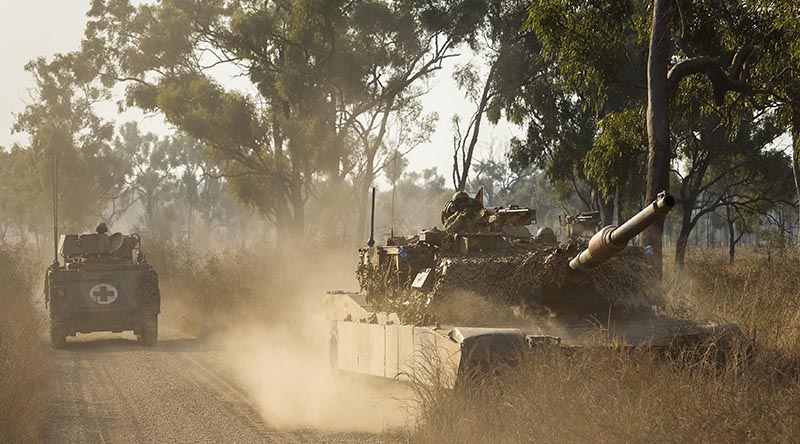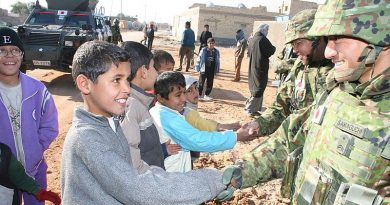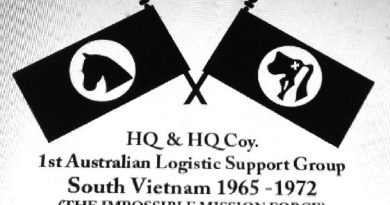What is it that the Chief of Army doesn’t want us to know?
Share the post "What is it that the Chief of Army doesn’t want us to know?"

On 20 July 25, a letter was posted to Brigadier Matthew Campbell, AM, the Chief of Army’s Chief of Staff. It requested the opportunity for two veterans from 1st Armoured Regiment to meet with the CA to discuss the reason that, after 75years’ service to the nation, the unit was suddenly stripped of its tanks and given a new role as a non-combatant.
Not having had a reply, a second letter was sent on 4 August 25. This included eight questions about why 1 Armd Regt was forced to become a non-combatant unit (listed in a letter published by CONTACT on that date). If a meeting wasn’t possible, the Chief of Staff was asked if he could provide answers for the benefit of the veteran community. A reply is still awaited (but, pragmatically, is not now expected).
Radio silence is the ADF’s default position, so the lack of a response is unsurprising. It has become so risk averse that self-censorship is now an ingrained part of ADF culture. Serving Australian military personnel are not at liberty to publicly discuss, let alone debate, defence issues; despite the advantages that this would have in terms of a greater understanding of defence issues among the general population. Allied service personnel have much greater freedom to express their views.
So, the reason behind the decision to strip 1 Armd Regt of its tanks has to remain secret.
Interestingly, it’s since emerged that wider issues of a ‘political’ nature, are likely to have been involved. All is not necessarily as it might seem on the surface.
There was undoubtedly an urgency to create a unit to manage emerging technologies. Why? It would appear to have been a failing of Defence to deal with the issue in a timely manner; creating a situation that had to be addressed quickly. No longer was there time to create a new unit; an existing one had to be given the new role.
Why was 1 Armd Regt chosen for the new role? The Chief of the Defence Force states that it was because of the unit’s “reputation as some of the Army’s foremost experts in manoeuvre warfare” [sic].
Of course, expertise in manoeuvre warfare has nothing to do with skills for evaluating emerging technologies. Presumably the person drafting the letter for the CDF was of the view that this was as good a reason as any other; especially as any public analysis of the wording was unlikely.
The real question to be addressed is: How do we see through the smokescreen and identify the actual drivers behind what happened to 1 Armd Regt? The period 2014-2017 was pretty chaotic with the move to Adelaide (from Darwin) and change to an armoured cavalry regiment (finalised in 2022 with incorporation into an integrated ARA/ARES brigade). [Pity about the wasted cost of tank hangers.]
The announcement that 1 Armd Regt was to become a test bed for emerging technologies was made in September 23 with the public release of the Defence Strategic Review (DSR). According to Defence, the new role was “intended to leverage Adelaide’s strong defence science, industry, and space sectors”. Obviously, the Adelaide location was one of the factors in the decision.
The DSR specified that ‘heavy’ armour was to be concentrated in Townsville, with 3 Brigade becoming an armoured brigade; the normal composition of which would be: a tank regiment (1 Armd Regt), a cavalry regiment (2 Cav Regt) and a mechanised infantry battalion (3RAR).
Given that 1 Armd Regt was no longer available, the decision was made to create a four-squadron dual-role unit based on 2 Cav Regt (with two squadrons of tanks and two of cavalry). This ‘solution’ sees 3 Brigade left without a tank squadron, a cavalry squadron and a battlegroup headquarters – massive downgrading of the RAAC, its combat power and command flexibility; plus, a significant loss of opportunities for experience and promotion across the Corps (in its RAAC role).
Were there other influences behind the decision? Could the real intention have always been that of reducing the size of the RAAC? Think about it. It is well known that the ballooning AUKUS costs are steam-rolling everything in front of them and savings in the Defence budget have to be made. A 25% cut back in the size of the RAAC and its significant operating costs, would undoubtedly help. It would also release pressure in terms of the existing recruitment shortfall.
Interestingly, the then 2 Cav Regt Honorary Colonel (now RAAC Representative Hon Col) has said that he had absolutely no warning as far as changes to the RAAC were concerned. This is in keeping with the secrecy imposed on the real reasons for 1 Armd Regt to be stripped of its tanks.
Integrity is one of the Australian Army’s core values. In an apparent contradiction, one of the hallmarks of integrity is openness and transparency in relation to decision making.
Lieutenant Colonel Bruce Cameron, MC, RAAC (Ret’d)
FILE PHOTO: An Australian M1 Abrams main battle tank and an M113 AS4 personnel carrier from 2nd Cavalry Regiment during Exercise Brolga Sprint 24 at Townsville Field Training Area, Queensland. Photo by Trooper Dana Millington.
.
.

.
.
Share the post "What is it that the Chief of Army doesn’t want us to know?"






I wonder what would happen should we discover the need for additional tanks? Presumably they will be placed on storage against long term need or will they?
Probably be stripped and buried like the choppers.